LA Thessaly, Greece
 High diversity of flora and fauna
Extensive mosaic pastures near villages
Long-distance transhumance
A highly mosaic landscape
Abandonment in remote areas
Overgrazing near villages
Transhumance is a modern challenge
Adding value to traditional products
Efficient cooperation is difficult
Lack of advice and effective extension services
Terra Thessalia: flexible governance
Participatory Guarantee System
Use of 3D mapping for public consultation
Monitoring livestock with GPS-tracking system
Need for mobile abattoir services to remote farms
High diversity of flora and fauna
Extensive mosaic pastures near villages
Long-distance transhumance
A highly mosaic landscape
Abandonment in remote areas
Overgrazing near villages
Transhumance is a modern challenge
Adding value to traditional products
Efficient cooperation is difficult
Lack of advice and effective extension services
Terra Thessalia: flexible governance
Participatory Guarantee System
Use of 3D mapping for public consultation
Monitoring livestock with GPS-tracking system
Need for mobile abattoir services to remote farms

The area hosts high biodiversity and many threatened species. With 850 plant species, it is a botanical hotspot in Europe. The area’s flora includes a great variety of medicinal and aromatic herbs. The endemism rate for plants exceeds 35%. It includes also many Important Bird Areas.

Extensive local and transhumant livestock with local animal breeds is dominant. Holdings with smaller herds use small pastures next to the villages, while larger herds are sent to the most remote pastures in mountains (600–800 m altitude).
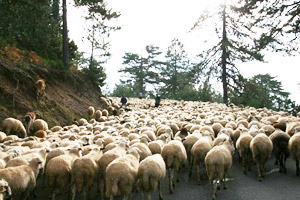
Important summer pastures are located at higher altitudes and far from the villages. The animals are herded there on foot for extensive summer grazing and returned to the lowlands for winter.
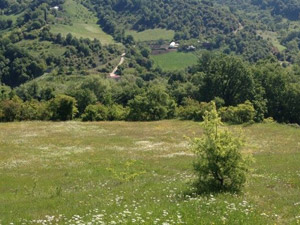
Farmland with a lower percentage of semi-natural vegetation in a complex mosaic landscape with arable and/or perennial crops. This supports many ecological functions, such as erosion control, and supports a great variety of species.

Abandonment is particularly severe on remote pastures, and occurs concurrently with overgrazing of pastures near villages. Abandonment also extends to remote fields where dry farming on terraces was previously practiced.
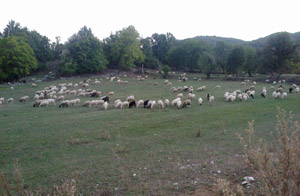
Pastures around the villages easily become overgrazed, resulting in eroded landscapes and loss of soil fertility. Fodder cultivation has intensified around villages while remote pastures are abandoned. Abandonment is detrimental for unique communities of flora and fauna, for example for carrion feeding birds.

An ancient practice of transhumance as a way of optimizing resource use faces many modern challenges, such as a deficient framework for the designation of land uses and unclear ownership status for the pastures.

Generally, there is no difference in price for food products from extensive (such as HNV) farming systems compared to intensively farmed products. Adding value that reflects additional public benefits of production as well as unique characteristics of local produce through certification is a solution.
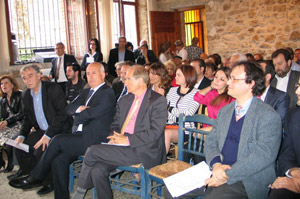
Reluctance by farmers to cooperate limits the amount of produce available to the existing short-supply chains (Diaspora, visitors, consumers' cooperatives) and distribution channels, such as supermarkets and specialty shops, that have a growing interest in high quality, local products.
There are clear gaps in the extension services for taking sustainability issues, traditional management of the commons (pastures, water), and biodiversity’s role for the long-term productivity and as a public good into account in a holistic manner.
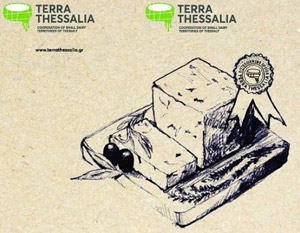
Terra Thessalia Cluster is a flexible governance format bringing together three representative bodies in an innovative process. It implemented the guarantee system for product quality from HNV farmers, developed techniques to improve grazing practices, improved access to the niche markets and established a redistribution system for the surplus.
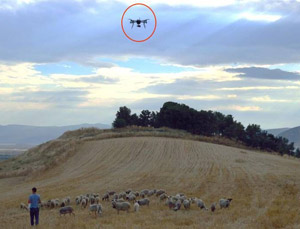
The Participatory Guarantee System (PGS) aims to disclose and guarantee the specific characteristics of the dairy production that are compatible with the HNV farming. It simultaneously guides environmentally sound production within pastoral holdings while guaranteeing the products’ quality to the consumers. It implements an integrated methodology for farmer advisory, a monitoring system and website for consumers.
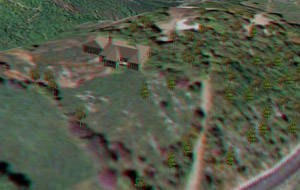
To enhance participatory planning, the facilitators used 3D interactive representations of the area from the last 15 years. The tool facilitated strengthening of communication amongst the actors for the management of the HNV farmland area generally and pastures specifically, as well as for "bottom-up" collecting of crucial information.

The GPS-tracking system records the daily position of the herds. This facilitates herd management through aiding shepherding, collecting data for pasture quality control, preventing conflicts between farmers and forestry services and, above all, certifying sheep farms with sustainable practices and add value to their cheese.

Many farms are remote from services for their products. Mobile abattoir (slaughterhouses), especially for goats, would help to reduce farmers' costs, advance animal welfare by reducing transportation of live animals, and improve traceability. Useful innovation example: Hälsingestintan in Sweden
Thessaly is a mountainous geographical unit of high historical importance in Central Greece. It covers 4200 km² with the altitude range of 250 - 2,400 m above sea level. The main land cover is wooded vegetation (shrubs and trees with some grassland and arable plots). The area is characterised by a persistently decreasing population and small-scale agriculture of crop cultivation and extensive livestock production. Currently, a process of socio-economic recovery is unfolding. New farmers are receptive to the many values the society attributes to the HNV character of the area. Many initiatives are underway to strengthen recognition of the multifunctional role of agriculture in the area by consumers and society-at-large. The University of Thessaly has been working on these innovative solutions in close cooperation with rural communities since 2000. For more information on the area, see the Baseline Assessment.
Innovations in Thessaly:
- Terra Thessalia: flexible governance
- Participatory Guarantee System
- Use of 3D mapping / GPS-tracking system
- Innovations (in Greek)
Some useful links:
- Terra Thessalia website
- Terra Thessalia (ENG) – General presentation
- Participative Guarantee System of Terra Thessalia Lactis (ENG)
- Projet Transhumance en Thessalie - Grèce - Université de Thessalie (laboratoire d'espace rural)
Innovations relevant for Thessaly from other project areas:
Other Downloads:
More info: www.terrathessalia.gr / Contact person: Dimitra Gaki
(July 2018)

